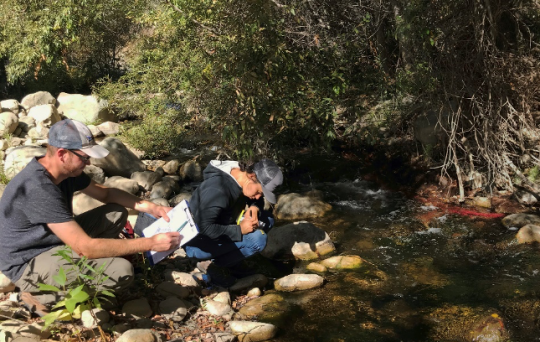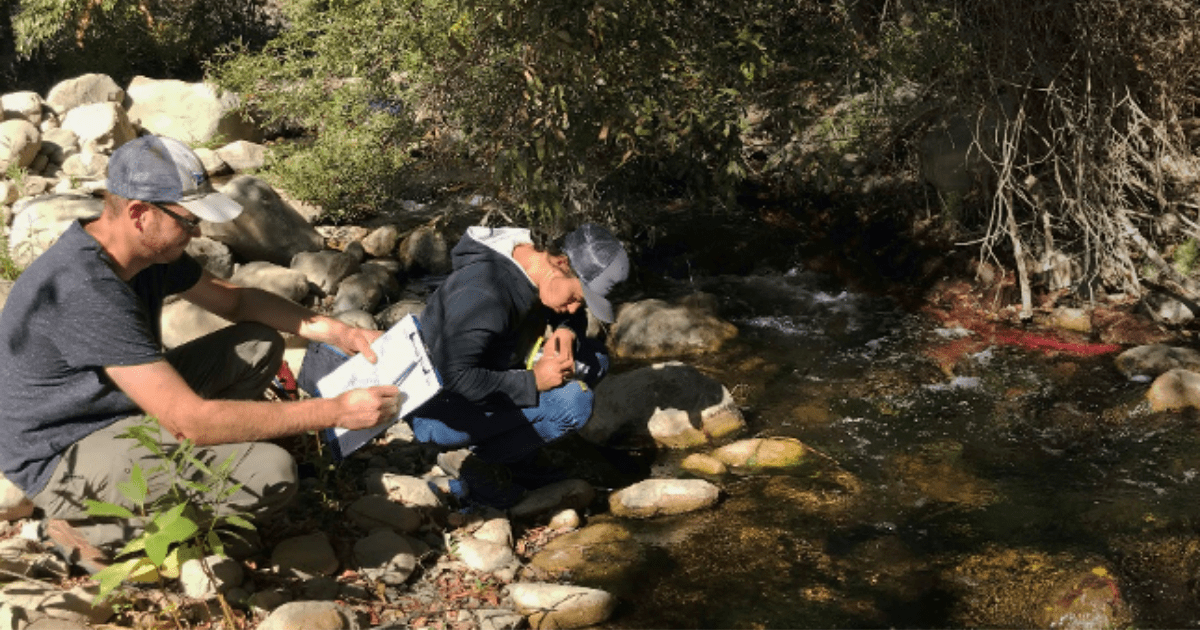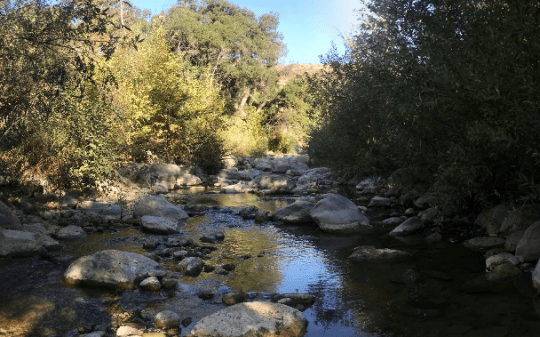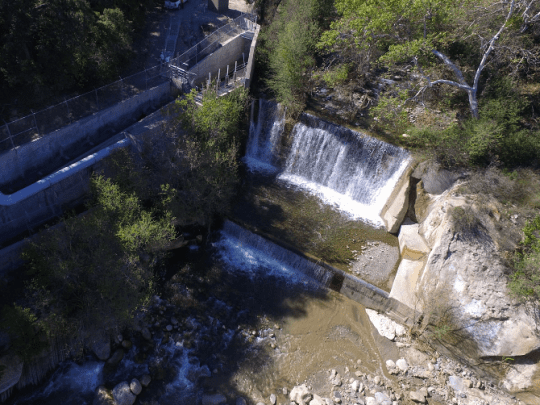Field Note: Supporting Endangered Steelhead Passage

Drawing on Santa Clara River Steelhead Coalition Member Expertise to Support Endangered Steelhead Passage
by Russell Marlow, Ventura Office Program Manager
This past fall, CalTrout, and the Wishtoyo Chumash Foundation conducted water quality sampling at several locations on Santa Paula Creek, a tributary of the Santa Clara River. Work that allowed us to glimpse a better understanding of the potential source of bacterial contamination observed by downstream landowners.

Wishtoyo-Chumash Watershed Ecologist Tevin Schmitt and Stream Team Technician Eva Pagaling collecting samples.
This work is an excellent example of the collaboration built to recover endangered Southern California Steelhead by restoring natural processes in the rivers of Southern California.
To restore rivers and streams, we need to broaden our scope to include a landscape-level understanding of natural processes. Which at its simplest, means that everything, and every action, is connected!
A combination of stakeholder concerns, project implications, and local experts provide us with an amazing opportunity to develop and broaden watershed level processes, but also our connection as a community.
This work was important for a few reasons.
Just downstream is Harvey Diversion, a total barrier to the passage of endangered Southern California Steelhead in the Santa Clara River basin. This project has been prioritized for remediation by state and federal agencies.
CalTrout is leading the multi-stakeholder effort to find a solution for passage at this location, no easy task. Harvey Diversion is a 30-ft dam with powerful flood flows and a dynamic sediment transport regime.
And that when you sign up for one project – aquatic species passage restoration, be ready when other issues pop up to further illustrate how interlinked we are.
In the process of working with local landowners and irrigation companies to assess and understand what is possible at this site, they expressed concern that a major issue they were monitoring at their wells was bacteria contamination coming from upstream. An issue for their operations, but also a critical concern for the health of the watershed as well. Everything is connected.
CalTrout, locally in Ventura, is the coordinator of the Santa Clara River Steelhead Coalition and a charter member of the coalition, Wishtoyo Chumash Foundation, has an incredible Stream Team water quality monitoring program and was more than willing to assist on the project. With their help, we were able to start a baseline water quality sampling and analysis study that provided preliminary results. Analysis of the samples suggested diffuse sources as the potential cause of the bacteria concentration problem. This could include recreation use, agricultural inputs and older infrastructure in the basin. With this data in hand, CalTrout can now engage local county officials to try and determine the best path for restoring water quality for aquatic species and the community.







